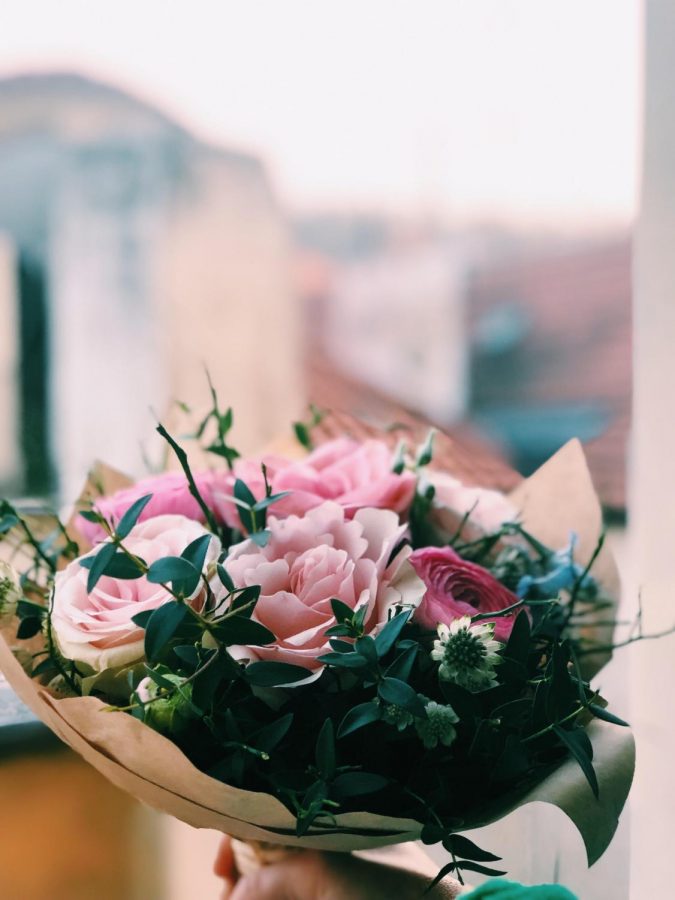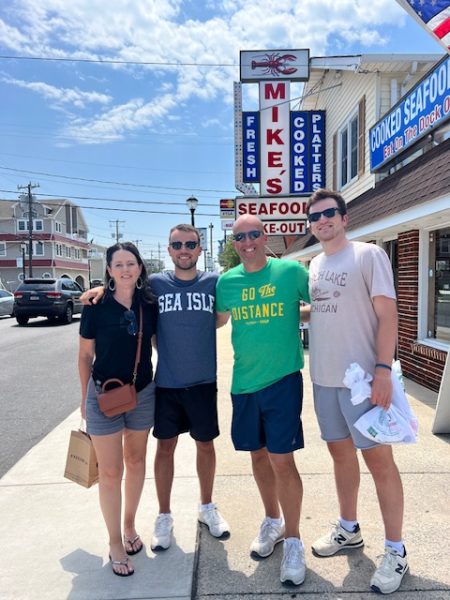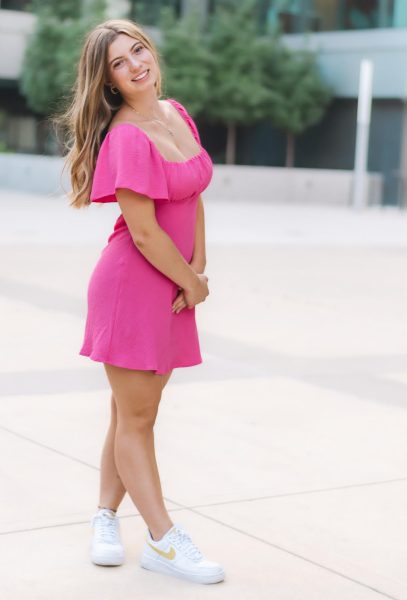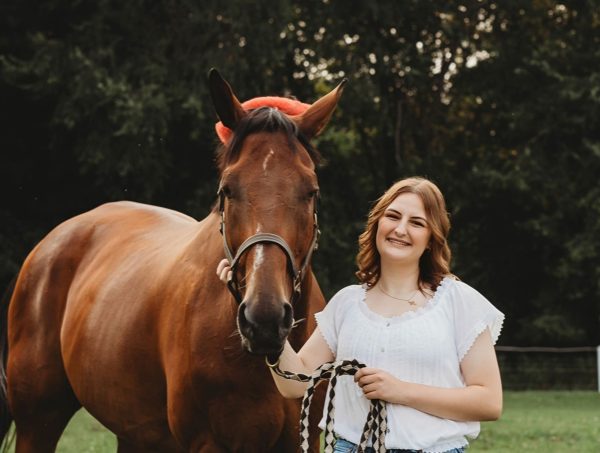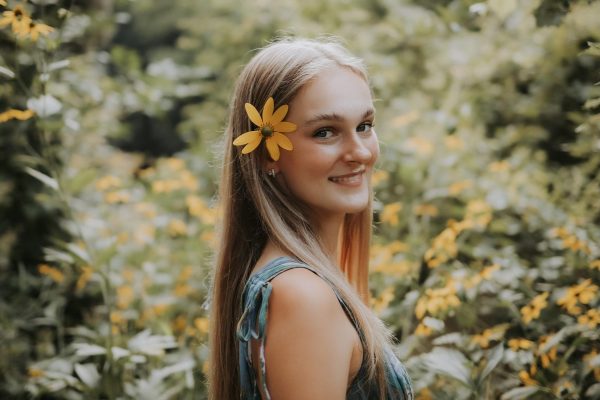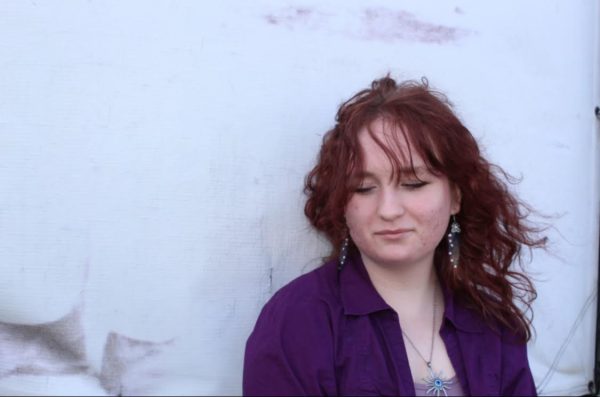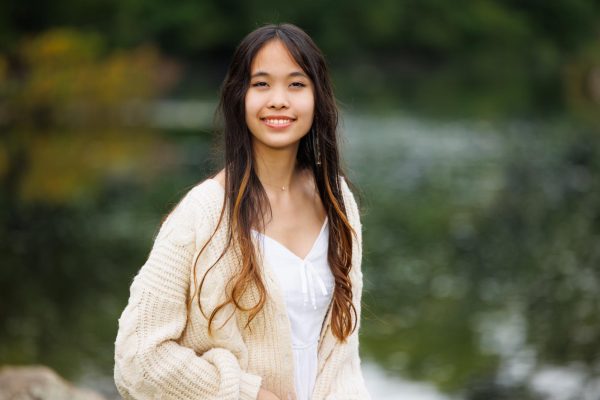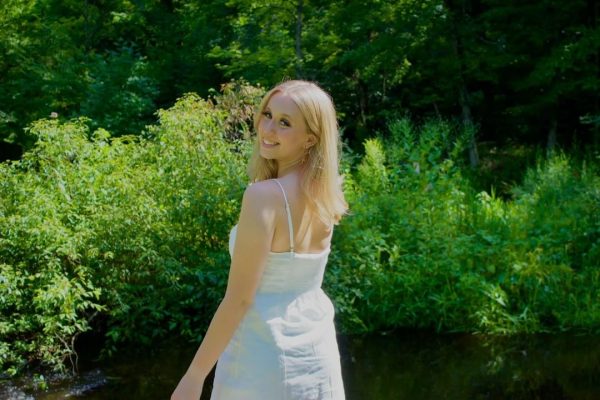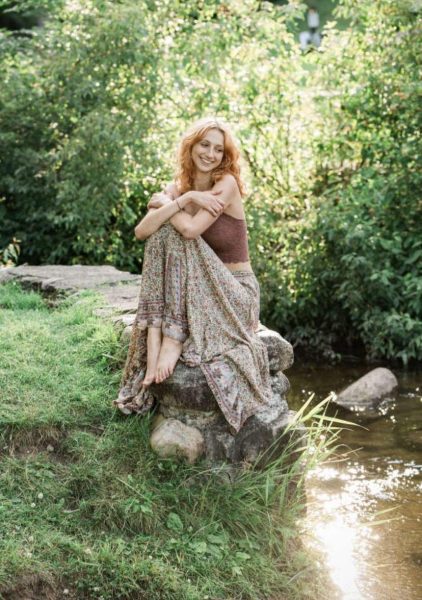Laurel Snyder is a firm believer in the power of a photograph
A picture of junior Laurel Snyder, someone who understand the power that a camera possesses.
Junior Laurel Snyder has some of her earliest memories to thank for the influential introduction of photography. Well, to be more exact, she has her childhood nanny and those memories to thank.
From a young age, that nanny speckled Laurel’s life with the joys of photography; downtown adventures become an avenue of exploring the process and meaning of photography for her.
“She’d take me out and show me how to use her camera,” Laurel reminisced. “I think that kind of influenced me like, ‘Oh, this is really cool.’ She’d take a few photos of the murals [downtown], and then she’d put something in front of it and blur out the background. It was really cool because [I’d] be like, ‘I know what’s in the background but maybe not everybody else does.'”
This blurred background became like a little secret—a secret common between the photographer and the scene itself. These memories transfixed Laurel, jumpstarting a passion for photography and a habit of asking her parents for a camera.
And the time to get that camera and start her own secrets with her photographs finally came when she was around the age of 12, receiving one from her parents.
Camera in hand—and a lot of “trial and error” and “sticking with [her] own gut” in that camera’s cache—Laurel began to document her own moments. With only a middle school photography class a few years later on, she developed her own style independent of essentially any other influences.
[Photography] means capturing not necessarily just memories but emotions, too—being able to hold on to things that you find really important to yourself.
— Laurel Snyder
“Ever since [I got my camera],” Laurel said, “I’ve just had a really fun time with it. I think that’s honestly been more fun for me because I’ve learned a lot along the way. I figured out my style more than what somebody else would have taught me.”
This style consists of portraits and simply just candid memories she holds on to. Within each of these photos, Laurel still employs that fundamental secret she saw when her nanny blurred the background in each of her photographs, and Laurel keeps them close to her, an important aspect of her love for photography.
“I like keeping the sacredness of the photo,” Laurel said, “because once a photo is revealed, it can kind of take a little bit of that emotion away. Or, at least holding onto it for a little bit longer and then showing it off later can be special because [you can say], ‘Hey, remember this day?’ and then you get to experience those emotions [with them again].”
She values this so much so that two of her favorite photos she has taken have these imperative aspects: this aforementioned “sacredness” and interlaced emotion.
In one of these favorites, the cool crisp hues of the flower bouquet in front of a window—a photograph she took in the Czech Republic and described as the “perfect day”—act as a portal back to that moment where the weather was perfect and the saxophone was drifting over the window sill from the stone streets below. And her most recent 9/11 photographs of her dad, a firefighter for Cascade, at a star climb honoring the day became an instant favorite of hers for this sheer emotion captured within the black-and-white frame.
“So when I look at that [bouquet photo],” Laurel said, “I feel like all those emotions come back to me again.” Then commenting on her 9/11 photographs, Laurel said, “I took a really cool picture of my dad looking at the flag holders down below. In the blurred background, there’s a whole line of over a hundred firefighters lined up, and I think that was a really powerful image.”
Reminiscing on these moments, ones so compelling and dynamic that they’ve stayed so vividly with her, runs in the heart of what photography has become to Laurel and what it has taught her beyond the lens and shutter speed.
“Looking back at memories that felt like they were just yesterday and realizing that happened like six years ago makes it more important to remember where you are right now,” Laurel said. “Also, looking back on where you’ve come from is really cool, and [photography lets] you see the growth that you’ve experience.”
In this sense, photography has become a tool of time, almost, for Laurel as it has made her more aware of this growth—more cognizant of the past. This capacity of a camera, one fatefully introduced to her as a child through simple murals and the city landscape, has kept her enthralled by photography and all of its power.
“It feels powerful when you are behind the camera,” Laurel said. “You get to transport yourself back into a time that was really special to you.”

Lynlee is a senior and is starting her final year in the midst of all this COVID-19 chaos, which is fitting for her strange luck. Room 139—home to The...






















































































